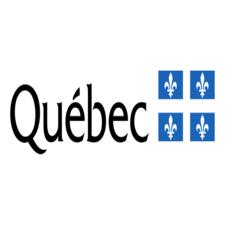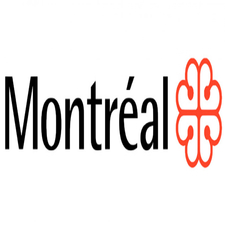Forest
Type of resources
Available actions
Topics
Keywords
Contact for the resource
Provided by
Years
Formats
Representation types
Update frequencies
status
Service types
-

The **portrait of forest cover in Québec** is an assembly made from the up-to-date ecoforest map of the inventory of southern Quebec and vegetation maps from the northern ecoforest inventory and Northern Quebec. Administrative divisions, forest boundaries and territories where forest management responsibilities and obligations are under the responsibility of the municipal environment are also added. Then, an update is carried out for areas that have a predominant use other than forest, including the road and rail network, energy transmission lines, cultivated land and built environments. The portrait makes it easy to calculate the rate of land use by forests in the territory of a municipality, an unorganized territory, an indigenous territory, an MRC or an administrative region, then to draw up a summary of some main characteristics of the forest.**This third party metadata element was translated using an automated translation tool (Amazon Translate).**
-

__The link: * Access the data directory* is available in the section*Dataset description sheets; Additional information*__. The forest maps from the first inventory are available at a scale of 1/20,000. They cover almost all of the territory south of the 52nd parallel. Each file covers an area of approximately 250 km2. These digital maps correspond to the black and white paper maps with a dimension of 125 cm X 75 cm that have been digitized and georeferenced. They illustrate forest stands. They were prepared from the photo-interpretation of aerial photos on a scale of 1/15,000. Main components: •outline of forest stands; • type of vegetation (forest species, density, height and stage of development, origin); • disturbances; • nature of the land (peatlands, gravel, etc.); • territorial subdivisions; • hydrography (lakes, rivers, streams, swamps, etc.); • transport network and bridges; • topography (level curves). The units of measurement shown on the maps in the first inventory are those of the English imperial system of measurement. **This third party metadata element was translated using an automated translation tool (Amazon Translate).**
-

__The link: *Access the data directory* is available in the section*Dataset Description Sheets; Additional Information*__. **The forest maps in the second inventory** are available at a scale of 1/20,000. They cover almost all of the territory south of the 52nd parallel. Each file covers an area of approximately 250 km2. These digital cards correspond to the black and white paper cards with a dimension of 125 cm X 75 cm that have been scanned. They illustrate forest stands. They were prepared from the photo-interpretation of aerial photos on a scale of 1/15,000. Main components: * outline of forest stands; * sub-groupings of species in all stands; * type of vegetation (forest species, density, height and stage of development, origin); * age class; * disturbances; * nature of the land (peatlands, gravel, etc.); * territorial subdivisions; * hydrography; * transport network and bridges; * topography (level curves); * slope classes; * defoliation class.**This third party metadata element was translated using an automated translation tool (Amazon Translate).**
-

This data layer contains individual forest stand level information for the Kemptville District, including: * working group (meaning a grouping of stands with the same predominant species composition. These are generally labelled based on the tree species that occupies the greatest canopy closure or amount of basal area in the stand) * species ID and percentage * height * age * stocking (meaning a qualitative measurement of the density of tree cover in a forest stand. This is generally based on the species with the most basal area, expressed as a percentage value ranging from zero to a maximum of 4. A stocking of 0 is empty, 1 is fully stocked, more than 1 is overstocked) * crown closure * soil moisture * stand modifier (meaning the subdivision of productive forest areas based on the presence or absence of physical or biological factors that will limit the ability to practice timber management) * site index * stand area (m²) This data was digitized in 1998 from 1978 hardcopy mylars through the Ice Storm Recovery Funding Program.
-

This data set contains the polygons delimiting the woods of the agglomeration of Montreal. The boundaries of the woods and their composition are the result of an analysis of aerial photos and/or of field visits and/or of particular ecological studies. These are constantly updated in accordance with the advancement of knowledge in the community. Some plant communities and their limits may therefore be imprecise.**This third party metadata element was translated using an automated translation tool (Amazon Translate).**
-

__The link: *Access the data directory* is available in the section*Dataset Description Sheets; Additional Information*__. **Slope classes** express the slope of the terrain in a relatively homogeneous area with a minimum area of 0.5 ha. They are generated from a numerical model that groups terrain slopes into six classes: + 0-3% zero + Low by 4-8% + 9-15% soft + Moderate by 16-30% + 31-40% strong + Steep by 41% or more These data cover almost all of Quebec south of the 52nd parallel. This map is presented in two groups: grouping at the provincial level and grouping at the scale of 1/250,000. Each grouping represents an assembly of sheets produced on a scale of 1/20,000. The datasets were originally produced in 2005 and then updated in 2006. In 2010, they were enhanced with slope information for the northernmost part. No updates have been made since then. __For more information, please refer to the document: [Products presenting the concept of slope] (https://diffusion.mffp.gouv.qc.ca/Diffusion/DonneeGratuite/Foret/DONNEES_FOR_ECO_SUD/Classes_pente/01-Documentation/Produits_presentant_la_notion_de_pente.pdf) __ __ ⚠️ Notes: __ The numerical terrain model is prepared from the level curves and altitude points that come from the topographic map at a scale of 1/20,000 and 1/50,000 from the Quebec Topographic Database (BDTQ). This geographic database was produced in 2010 and has never been updated. __ 🕰️ Former names:__ Numerical slope classes, Slope class **This third party metadata element was translated using an automated translation tool (Amazon Translate).**
-

__The link: *Access the data directory* is available in the section*Dataset Description Sheets; Additional Information*__. Formerly, forest maps were produced by the Land Survey Department of the Ministry of Lands and Forests. Some of these maps dating **from 1924 to 1946** still exist and are treasured at the National Archives of Quebec. The information they contain makes it possible to locate and characterize forest areas in certain regions of Quebec. Color codes were then assigned for each of the following classes: young forests, old forests, burned, logged, rocky, savannas, and colonization. **These historical forest maps are available in two digital formats (PDF and TIFF) . ** **This third party metadata element was translated using an automated translation tool (Amazon Translate).**
-

__The link: *Access the data directory* is available in the section*Dataset Description Sheets; Additional Information*__. The **Harvest and other silvicultural interventions** mapping is produced as part of the ecoforestry inventory of southern Quebec in order to maintain an up-to-date portrait of the forest. Several stakeholders related to forest operations participate in maintaining this forest portrait, including the Regional Operations Sector of the Ministry of Natural Resources and Forests (MRNF), private forest development agencies and major landowners. This map contains information on forest interventions carried out on the territory (e.g. harvesting, thinning, reforestation) as well as the year of work. The period of work begins at the beginning of the 20th century (when information is available) to the present day. The associated information is presented as a series of overlays of interventions. This map covers the commercial territory of public forests and private forests in Quebec. **The minimum mapping area is 0.1 ha. ** __ ⚠️ Note that__ when there is more than one intervention on the same territory during the same year, priority is given to the one that changes the forest cover in a sustainable way (e.g. planting). To have access to all the interventions for the same year (in public forests only), please consult the technical and financial activity reports (RATF) distributed by the Ministry's Regional Operations Sector on the government website of Data Québec. **This third party metadata element was translated using an automated translation tool (Amazon Translate).**
-
NFIS Project Office. This Web services are for forest change products that represents the first wall-to-wall characterization of wildfire and harvest in Canada at a spatial resolution commensurate with human impacts. The information outcomes represents 25 years of stand replacing change in Canada's forests derived from a single consistent spatially-explicit data source and derived in a fully automated manner.
-

__The link: *Access the data directory* is available in the section*Dataset Description Sheets; Additional Information*__. The layer of **ecological planning units (UPE) ** constitutes the territorial base at the base of the ecoforest inventory process in southern Quebec (IEQM). It was created and then integrated as part of the current inventory (fifth IEQM). It integrates concepts that are both administrative (forest region) and ecological (ecological region). More precisely, the division is done on an ecological basis within each of the forest regions. It is on this basis that the activities of the IEQM are planned. Each of the layers included in the IEQM monitoring datasets reports on what has been achieved as part of the current inventory. We are talking here about aerial photography, mapping, terrestrial sampling of temporary sample plots, and compilation activities. Each year, new territories are added to each layer to reflect the progress of the work. **This third party metadata element was translated using an automated translation tool (Amazon Translate).**
 Arctic SDI catalogue
Arctic SDI catalogue